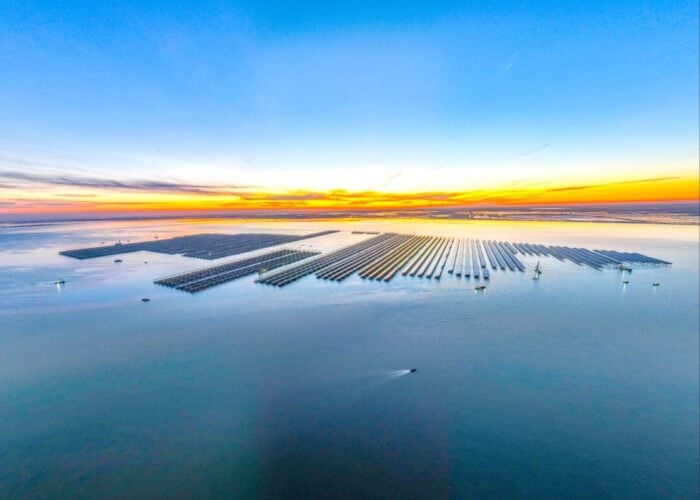
The latest news indicates that the price of polysilicon continues to decline, dropping from a high of RMB300,000/ton (US$41,435) to the current price that is close to RMB40,000/ton. The prices of wafers, cells and modules have also fallen rapidly in succession. The sharp fluctuation of industrial chain prices has prompted a wait-and-see attitude within the PV market.
On 24 April, the data released by the Silicon Industry Branch of the China Nonferrous Metals Industry Association showed that polysilicon prices dropped again this week. The average transaction price for n-type rod silicon was RMB49,200/ton, down 6.29% compared to the previous week. The average transaction price for p-type monocrystalline dense material was RMB42,800/ton, down 6.75% compared to the previous week.
Try Premium for just $1
- Full premium access for the first month at only $1
- Converts to an annual rate after 30 days unless cancelled
- Cancel anytime during the trial period
Premium Benefits
- Expert industry analysis and interviews
- Digital access to PV Tech Power journal
- Exclusive event discounts
Or get the full Premium subscription right away
Or continue reading this article for free
The price difference between n-type and p-type silicon rod is RMB4,100/ton, and this price gap has been narrowing. The average transaction price for n-type granular silicon is RMB43,000/ton, a decrease of 9.47% compared to the previous period. It is worth noting that the lower price limit for p-type dense material has already reached RMB40,000/ton.
| Item | Highest price (in ten thousand yuan per ton) | Lowest price (in ten thousand yuan per ton) | Average price (in ten thousand yuan per ton) | Fluctuation | Fluctuation percentage (%) |
| N-type material transaction price | 5.20 | 4.50 | 4.92 | 0.33 | 5.29 |
| Recycled material transaction price | 4.70 | 4.20 | 4.51 | -0.20 | 4.25 |
| Monocrystalline dense material transaction price | 4.50 | 4.00 | 4.28 | -0.31 | -6.75 |
| Monocrystalline cauliflower material transaction price | 4.20 | 3.70 | 4.04 | -0.28 | 6.48 |
| N-type granular silicon | 4.40 | 4.20 | 4.30 | -0.45 | -9.47 |
According to the analysis by the Silicon Industry Branch, silicon material prices have reached the cash cost level of most companies, or have even fallen below that of some companies. Although silicon material prices have continued declining for several weeks, the current price drop is still not in line with downstream expectations. The downstream market continues to anticipate further declines and no signs of a large-scale, low-price stockpiling are detected. At the same time, downstream companies have in general exhausted their stockpiles early on, and tentative transaction orders have increased. It is inferred that the stockpiled polysilicon at present can sustain at least one month or more as wafer production has been further reduced,
“Against the backdrop of a temporary oversupply, from silicon to modules, all the main links on the entire industry chain have seen prices fall below production costs, and the market is showing irrational competition in the short term,” said the Silicon Industry Branch in its analysis.
The industry consulting firm InfoLink Consulting has provided silicon material quotations that are largely consistent with the aforementioned figures. The organisation has noted that the previously frozen market is now transforming into a market of fierce price competition. Additionally, as the overall price is rapidly collapsing, the final prices of many orders are still uncertain.
The production start and production line shutdown are the key focuses for Q2
After the PV investment boom, news of various production halts and project investment terminations has emerged. In March, Yinxing Energy announced the conclusion of its holding company’s bankruptcy proceedings. On April 24, Jolywood announced that it had terminated a silicon project with a total investment of RMB14 billion.
Industry analysis suggests that the PV “elimination game” has already spread to the silicon material sector. In the current climate where cash is king, “survival” is more important.
Regarding future prices, InfoLink has judged that as April is coming to an end, there is still a possibility that silicon material prices will continue to fall in the few working days before the May Day holiday, but the speed of the decline will significantly slow down in the mid-to-late period of Q2. Having already fallen below the overall production cost level, prices may continue to fall, but within a limited margin. Production start and production line shutdown will need to be closely monitored later in Q2.
In the wafer sector, prices diverged during the week of 24 April. There are top companies aggressively pushing up prices, and there are also second- and third-tier companies dumping at low prices. The average transaction price for p-type M10 monocrystalline wafers fell to RMB1.63/piece, a week-on-week decline of 2.4%; the average transaction price for n-type M10 monocrystalline wafers fell to RMB1.55/piece, a week-on-week decline of 3.13%.
The average transaction price for p-type G12 monocrystalline wafers remained at RMB2.13/piece, flat week-on-week. The average transaction price for n-type G12 monocrystalline wafers was RMB2.18/piece, a weekly decline of 3.96%.
In the downstream sector, solar cell prices also continued to go downward slowly, with only G12 PERC solar cells seeing a slight increase in transaction price to around RMB0.36-0.37/W as a result of PV project shipments.
As for modules, it is even more challenging for prices to rise. While leading manufacturers still adhered to the bottom price of RMB0.88/W as of the end of April, there were also prices that were below the cost line in the middle and late April.
InfoLink stated that, affected by supply chain fluctuations, the PV market will wait and see how the orders will proceed in May. At present, it seems that it is difficult to maintain the original price level in May. The recent module tendering prices of some central and state-owned enterprises in China have still remained downward. Some module manufacturers are planning to reduce production in May to contain the price drop.






